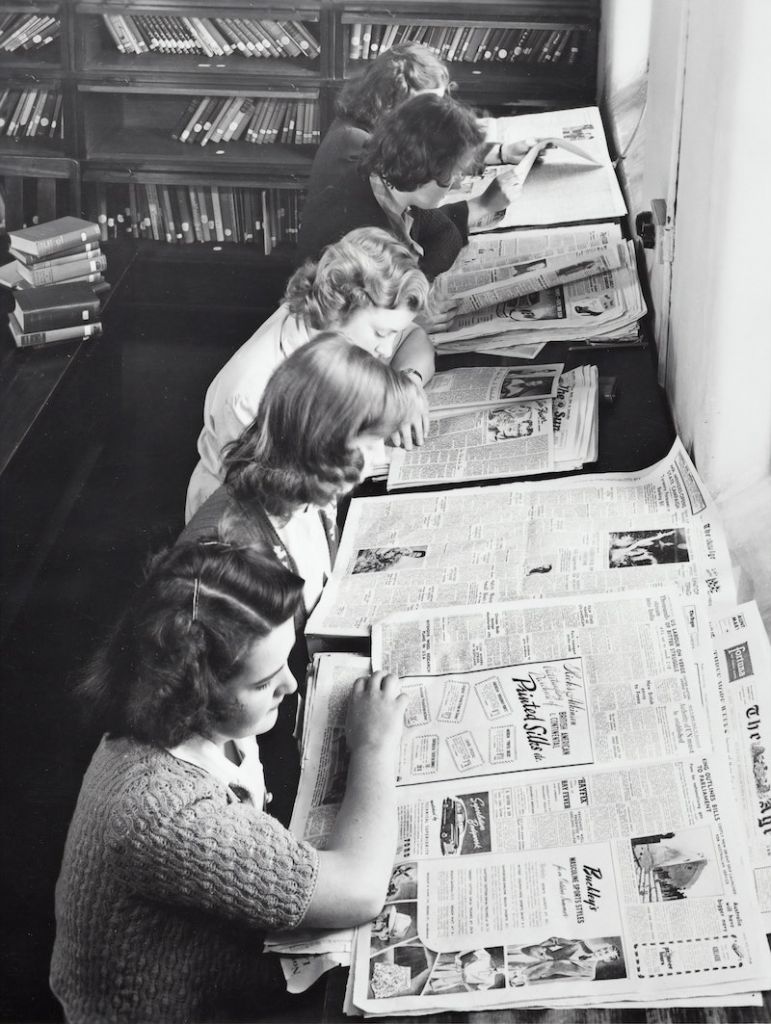There’s a tree stump in our living room. There’s another one in our closet. We have lumber scraps in our parking garage and two pieces from an antique organ on our kitchen counter. There are also random boards stacked behind our front door and stashed under furniture.
All this raw material has a purpose. My husband likes woodworking, and he makes furniture from the wood we scavenge from our apartment building’s dumpster. He’s transformed a scuffed dining table into a pair of matching end tables. He’s made lamps from scrap lumber. And the old organ wood will eventually be a pair of shelves.
We both like finding interesting wood scraps to bring home, but if all we ever did was indiscriminately collect raw material, it would be a useless practice. Eventually, our home would be cluttered and we’d get overwhelmed.
I think this is a useful metaphor for how people today collect information—especially now, during a bewildering year. Most of us fill our minds with information all day long. Sometimes we’re selective. But often we indiscriminately collect tweets, headlines, half-read news stories, Facebook posts, status updates, and podcasts.
Information is important. But accumulating information is not the same thing as being wise, any more than collecting scrap wood makes you a woodworker. It’s what you do with the raw material that matters. Otherwise, all that information collecting? It’s futile, and it will overwhelm you.

This past year as I’ve heard people discuss mask mandates, school options, the U.S. election, and whether or not to attend a family reunion, I’ve noticed a common refrain: “I just don’t know what to think.” (It’s a refrain I’ve heard in my own mind too.) And unfortunately, “I don’t know what to think” can sometimes become “I can’t know what to think.”
But I disagree that in the face of information overload, we can’t know what to think. We just need to brush up on our critical thinking skills (or learn them for the first time). I recently had the opportunity to do this when I wrote a middle-grade book about critical thinking called Think for Yourself.
Critical thinking is the process of evaluating information to make decisions about what to believe or do. It’s a set of skills that takes time and practice. And most of us don’t do it enough. Reviewing these skills has helped me process the information overload of 2020—and it might help you too.
One reason that we feel incapable of knowing what to think is that we stockpile information without ever taking the time and effort to process it. Information—the tweets, the links, the articles, the videos—is all raw material. But like salvaged wood, it’s clutter unless you do something with it.
That’s where critical thinking skills can help us: When we don’t know what to think, it helps to remember how to think.
When you have raw material, you need tools. And that’s what critical thinking skills are. Here are a few to consider:
Limit your information intake.
This isn’t a critical thinking skill, but it’s an important starting point. Technology moves much faster than we do. The human brain is incredible but it also processes very slowly compared to the tiny computers in our pockets. Our brains weren’t made for the 24-hour news cycle or constant texting and Insta Stories. If we hope to make sense of the information in our minds, we first need to reduce input. (And that includes scrolling through Facebook and Instagram.)
Evaluate the information and check your sources.
In college, I studied journalism and history, two fields where knowing how to evaluate information and trace it to reputable sources is critical. But fact-checking isn’t just a job for journalists and historians, everyone can fact-check. And these days, everyone should. Each of us plays a role in the spread of misinformation.
The headline that popped up in your newsfeed might be infuriating, but is it true? There are ways to find out, but we have to be willing to give our time and mental energy to the task—and push past our initial emotional response.
Sometimes evaluating a source begins with the simple question: “Who said that?” I’ve had a few conversations lately where the other person was angry about something they read online. The first time it happened, I instantly shared my friend’s anger. But then I paused and asked: “Wait, who wrote that?” The answer to the question mattered because it gave me much-needed context to the statement that had made me angry. In this case, knowing the source gave me understanding. In other cases, it could help me determine if the information itself is reliable or trustworthy.
Learn to identify logical fallacies.
An election year is a good time to learn about logical fallacies. (Your mailbox is probably full of them right now, printed on slick, shiny paper. I live in a swing state, so I get them every day.) A logical fallacy is an error in reasoning that weakens or discredits an argument. It’s a statement that can appear to be true but is built on faulty logic. Politicians and self-help gurus use them a lot. But so do the rest of us. Here are a few examples (you can find more here):
- Ad hominem: To attack the person making the argument rather than addressing the argument itself.
- Straw man: To misrepresent or exaggerate someone’s argument in order to make it easier to tear down.
- Bandwagon argument: To claim that something must be true because it’s popular or because many people believe it.
- Slippery slope: To assume that if one thing is allowed to happen, it will automatically cause a chain reaction.
- Red herring: To distract from the original argument by introducing a new argument or claim.
- False dilemma: To assume there are only two possible conclusions to a particular issue.
Recognize the power of emotion.
Emotions can be good, but they can also mislead us and be easily manipulated. (Especially big emotions like anger and fear.) There’s another type of logical fallacy called the appeal to emotion fallacy. This occurs when someone tries to create an emotional response in their audience (or another person) instead of constructing a compelling argument that can be examined and debated. In the appeal to emotion fallacy, you’ll often see this pattern:
A claim + An emotional appeal + A call to action
or
An emotional appeal + A call to action
What’s missing is evidence. Of course, using an emotional appeal in an argument isn’t inherently bad or deceptive. But in good arguments, emotion is used alongside evidence and logic, not in place of them.
Practice empathy.
In order to think critically and deeply about the information we consume, we must be willing to see the people behind the news stories, arguments, and opinions.
A few years ago, I was exasperated. There was a person in my life who had a political position I could not understand. One day I was venting when my husband asked me a question I’ve never forgotten: “Is it possible this person has had different life experiences than you?” Ugh. He was right. The question was the reality check I needed and the reminder to consider the person in the midst of the issue.
There are more facets to critical thinking and more skills than I’ve shared here, but I hope this offers a place to start. How about you? How are you handling information overload these days?



